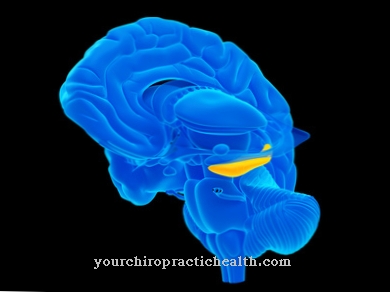The speed belongs to the basic motor characteristics. In certain sports disciplines, it is the defining component.
What is the speed?

In sports science, speed is assigned to the basic motor characteristics alongside strength, endurance, coordination and mobility. It can be divided into 2 components, the speed of action and the speed of reaction.
The demarcation to speed power, which describes an aspect of power and is sometimes similarly defined, is based on the level of resistance. Accordingly, the speed of action is described as the ability to execute motion sequences with low resistance at the maximum possible speed.
The speed of reaction is characterized by the ability of an individual to respond as quickly as possible to a stimulus with a movement. Movements that are carried out at top speed are only possible for a short period of time. This is due to the fact that the storage systems that provide the necessary energy only have small capacities.
No other physical performance component is so genetically determined as speed. It can only be improved by 15% -20% through intensive training.
In addition to the inherited ability, top performance depends on various biological and physiological requirements and the technically correct execution, which in turn requires good coordinative skills.
Function & task
In everyday life, speed plays a role in escape and protective reactions. In contrast to protective reflexes, these are conscious courses of action that are set in motion after the perception of a dangerous situation. Local reactions only affect the speed of reaction. An example of this is pulling back the hand or leg when a dog tries to bite. In addition, the speed of action is also required when a large animal attacks from a certain distance. The escape as a protective reaction can only be successful if it takes place with the greatest possible speed.
Many sports include speed as part of the movement, others are completely shaped by it. For a better differentiation, the speed is divided into 2 aspects in this context. The speed of acyclic movements relates to individual movements. Such a retail trade is, for example, the serve in tennis, the smash hit in volleyball or the jump shot in handball. Immediately after the impact, the speed action is over and an activity with another type of stress follows, for example landing with the short-term assumption of a stable position.
The speed of cyclical movements is characterized by the fact that the same, recurring movement sequences are completed at top speed. All sporting sprint activities can be assigned to this category; in athletics as well as in swimming or track cycling. The execution of such speed requirements is limited in time, as the energy stored in the muscle cells (ATP and KP stores) is only sufficient for a few seconds. Well trained athletes can achieve this speed performance for a maximum of 40 seconds, which corresponds to a 400 meter sprint in athletics. After that, not so much energy can be delivered per unit of time. The speed of movement must therefore be reduced and the athlete slips into the area of speed endurance.
Many sports contain acyclic and cyclic speed components. The degree of speed that an athlete can achieve depends on an intact nerve-muscle system and the state of training, but is largely determined by the fiber composition in the muscle.
There are fast twitch fibers (FT muscle fibers) and slow twitch fibers (ST muscle fibers) which are present in the muscle in a genetically determined proportion that can only be influenced little by training. The higher the proportion of FT fibers, the better the conditions for top performance in the area of speed.
You can find your medication here
➔ Medicines for muscle weaknessIllnesses & ailments
The ability to move at the highest possible speed is directly related to the intactness of the muscles and the nervous system. Even small disturbances prevent maximum performance. Minimal injuries such as muscle strains cause a bright, acute pain with every contraction, which does not allow fast movements to be continued.
The same problem arises with larger injuries such as muscle fiber or bundle tears, but also with meniscus lesions and ligament tears, but often gradually more severe. Movements are then only possible slowly, if at all. Even the micro injuries that are responsible for sore muscles limit the speed of movement.
Signs of wear and tear such as hip and knee osteoarthritis affect the speed of the legs in different ways. On the one hand, the muscles break down in the course of the disease process and performance decreases. On the other hand, there are movement restrictions that reduce the movement amplitude of the legs, which leads to a decrease in the speed of movement with the same movement frequency.
The muscles can only perform for maximum speed if they get enough energy in a short time. Metabolic diseases like diabetes interfere with exactly this process. The absorption of glucose into the muscle cells is hindered. As a result, the ATP stores can no longer be replenished quickly enough after physical activity and speed performance is no longer possible or only possible for a shorter period.
Muscles need nerve stimuli to drive their activity. If these do not occur or if they only arrive at a weakened level, there is no or only a reduced contraction. This has a negative impact on all conditioning skills, including speed.
The nerves can be damaged as a result of injuries or diseases that affect either conductivity or the generation of impulses in the central nervous system. In both cases this is associated with a significant loss of muscle function.
Peripheral lesions due to injuries or the breakdown of the insulating layer of the nerve fibers, as in polyneuropathy, cause a complete or incomplete loss of function of the muscles. In the best case scenario, residual functions are still available, but high-speed performance is no longer possible.
Brain diseases such as multiple sclerosis, stroke or other atactic diseases primarily impair coordination, but also affect the other basic motor properties.












.jpg)

.jpg)
.jpg)











.jpg)